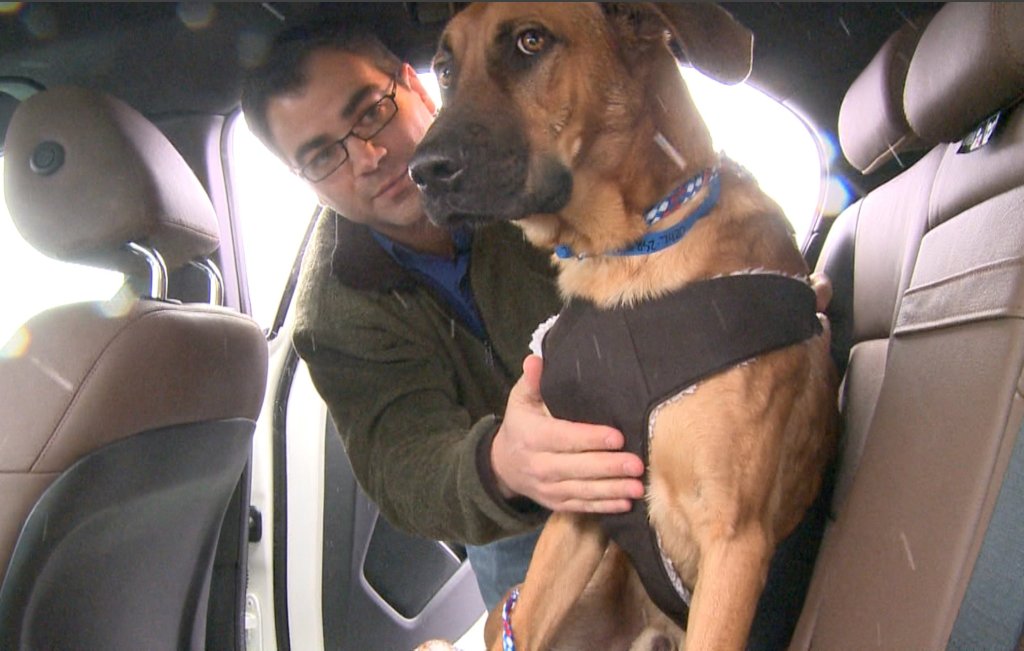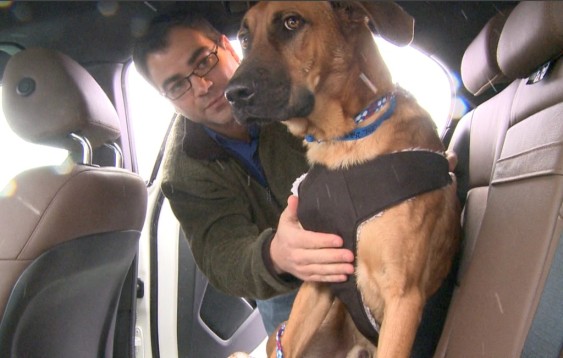Millions of pet owners could unknowingly put their dogs and cats at risk when they travel for the holidays, but a few tips can make the journey safer and more enjoyable.
“We recommend all pets be secured in vehicles,” said Ryan McTigue, Michigan Humane Society spokesperson. “You can use a crate or a harness that attaches to the seat belt for dogs. Cats should always be in a carrier. They don’t generally do well in cars,” and may slip out an open door or window or curl up among the pedals at the driver’s feet.
“It’s for the safety of the pet, and the people in the car,” said Dr. Alexander Byron of Greenfield Animal Hospital in Southfield. “An unsecured pet is potentially a projectile inside the vehicle, flying at 50 or 60 m.p.h. In an accident, it could hit the windshield and be injured, or it could strike one of the human occupants.” Even small dogs and cats could cause serious injuries if they hit a person — particularly a child — at that speed.
Unsecured pets can also be thrown out of the vehicle in an accident, where they may be injured, struck by another vehicle or simply wander away, lost and afraid.
More than half of American pet owners travel with their animals, according to a study by AAA and Best Western hotels. With an estimated 46.3 million people traveling more than 50 miles for Thanksgiving — more than 1.3 million in Michigan, according to AAA Michigan — this week is the beginning of a season when millions of pets will be on the road.
A few tips:
■ Never drive with a pet on your lap. It’s dangerous for the animal, you and other drivers. The driver’s air bag would immediately kill any animal small enough to fit on your lap. The animal could also slip onto the floor because of bumpy roads or a sudden maneuver.
“If they get under the brake or the accelerator pedal, you’re faced with a difficult decision: do I hit the brake and squish my pet or plow into the person in front of me,” Byron said.
■ It’s a bad idea to let your dog stick its head out the window.
“The dog may like it, but stones that can chip a windshield could injure or blind a dog,” McTigue said. Even a grain of sand or leaf could damage a dog’s eyes at automotive speeds.
In addition, a dog standing on the armrest to stick its head out a partially open window can step on the power window switch and open the window fully. “All of a sudden, the driver’s concerned with, ‘Is my dog gonna jump out the window?’ which can lead to distraction and accidents,” Byron said. “If the dog does jump out, they can get broken bones and damage to the pads of their feet.”
■ Because animals can slip out of vehicles while far from home, they should always wear collars with ID tags. The tags should have the owner’s mobile phone number, so they’re easy to reach while traveling.
■ Byron suggests getting animals acclimated to car travel when they’re young.
“Take them on short, regular trips on a regular basis when they’re young. Give them little treats, maybe have somebody come with you in the car patting them. Go two or three blocks and let them know their trip will always end with them coming back home.”
AAA publishes a book of tips for traveling with pets. The “AAA Petbook” has information about dog parks around the country, hotels, campgrounds, crossing international borders, pet etiquette and dog parks around the country. It’s available at many AAA offices for $18.95 for a print edition and $9.95 for a digital copy from online booksellers.
via Traveling safely with your pet for the holidays.



